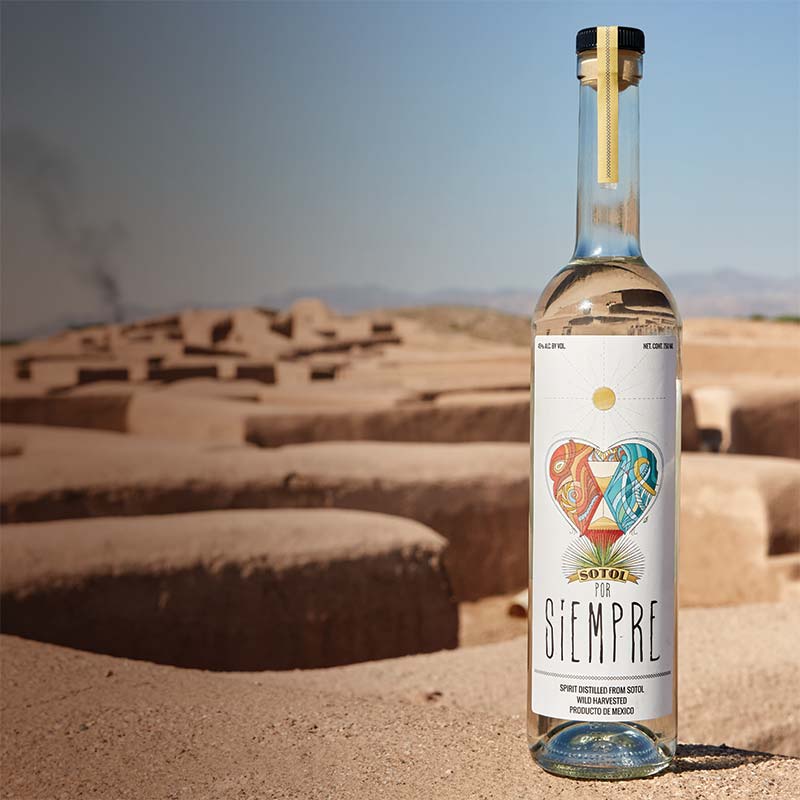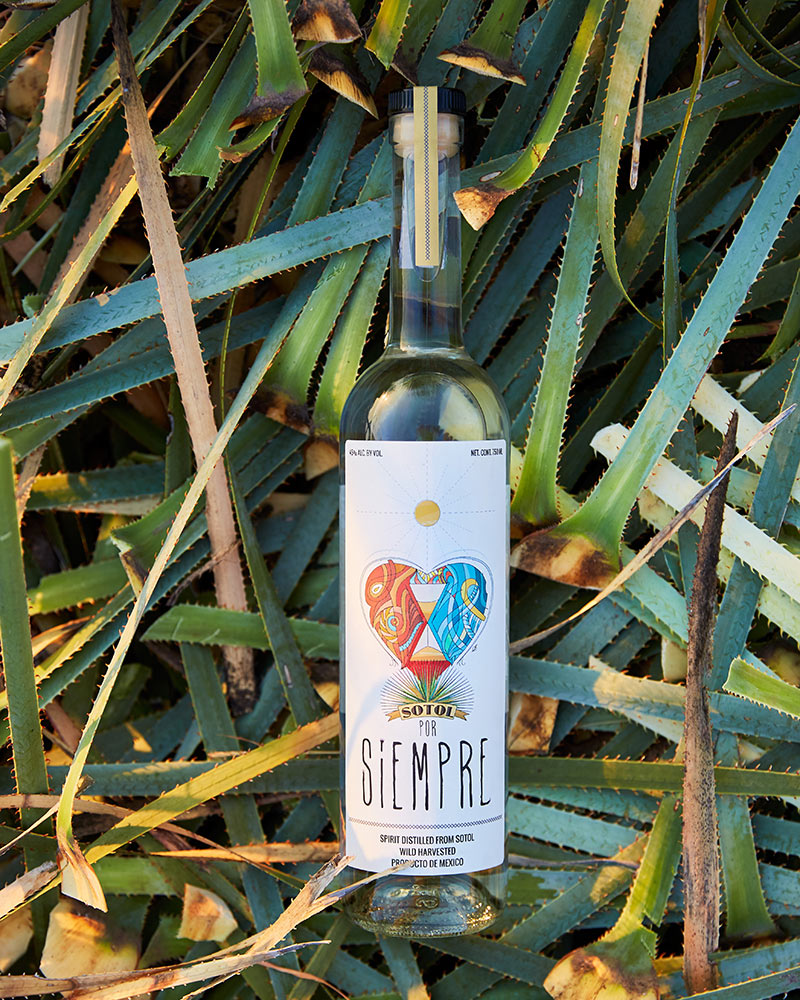
Sotol Por Siempre
Por Siempre means forever in Spanish. Our name - Sotol Por Siempre - speaks to forever in its duality; forever in the sense of the future, of the generation of sotol distillers to come, and also of the past and the way that things have always been. We are honored to work with a 6th generation, family-owned producer who, by honoring the traditions of the past, ensures the future of Sotol forever.
In 2019, our producer partners, the Jacquez family renamed its company Sotol Don Celso to honor the memory of Celso Jacquez, 5th generation distiller.
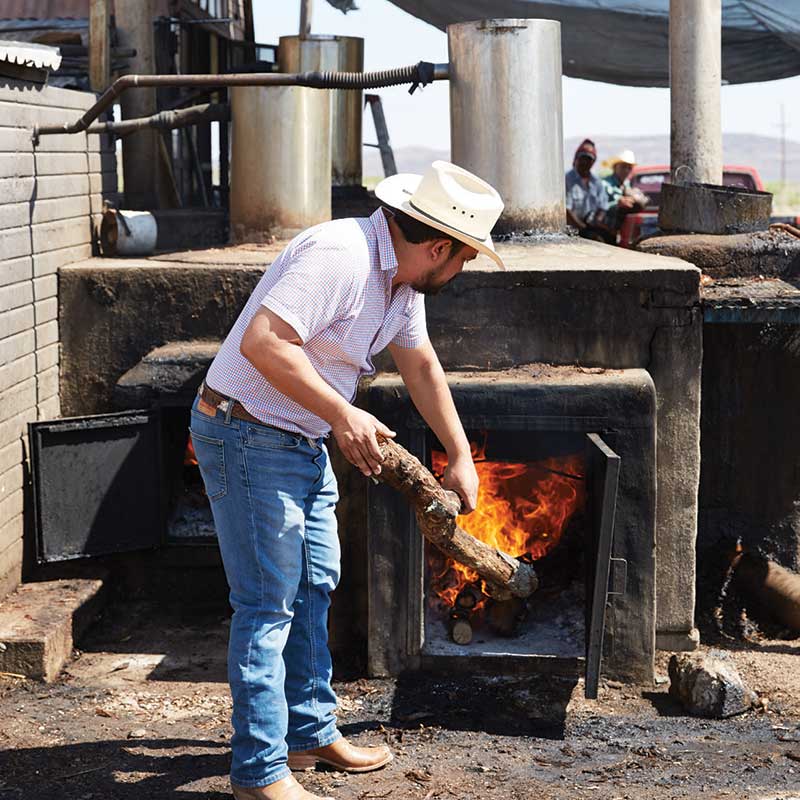


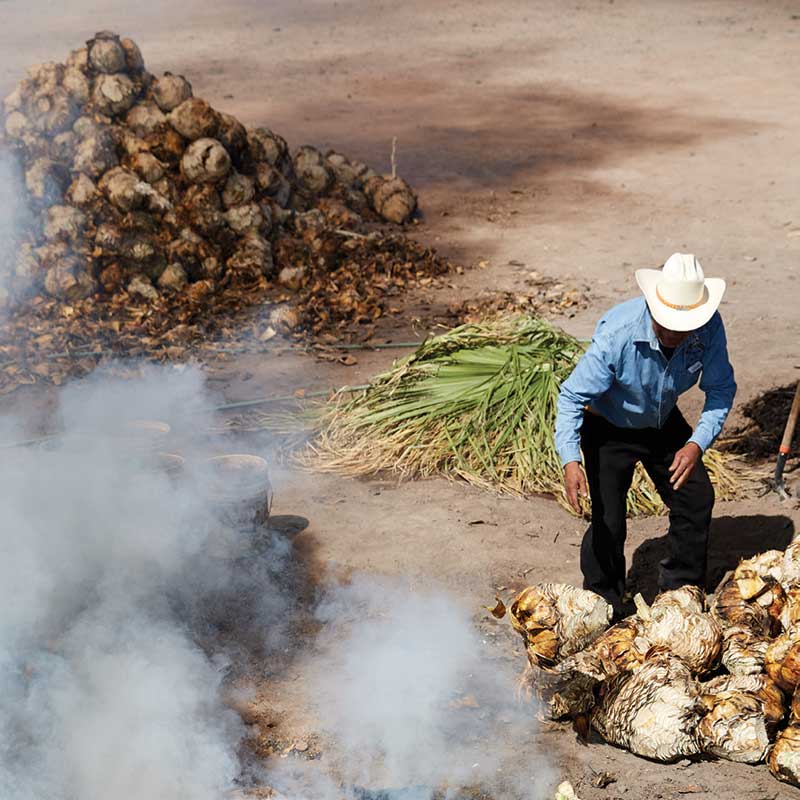
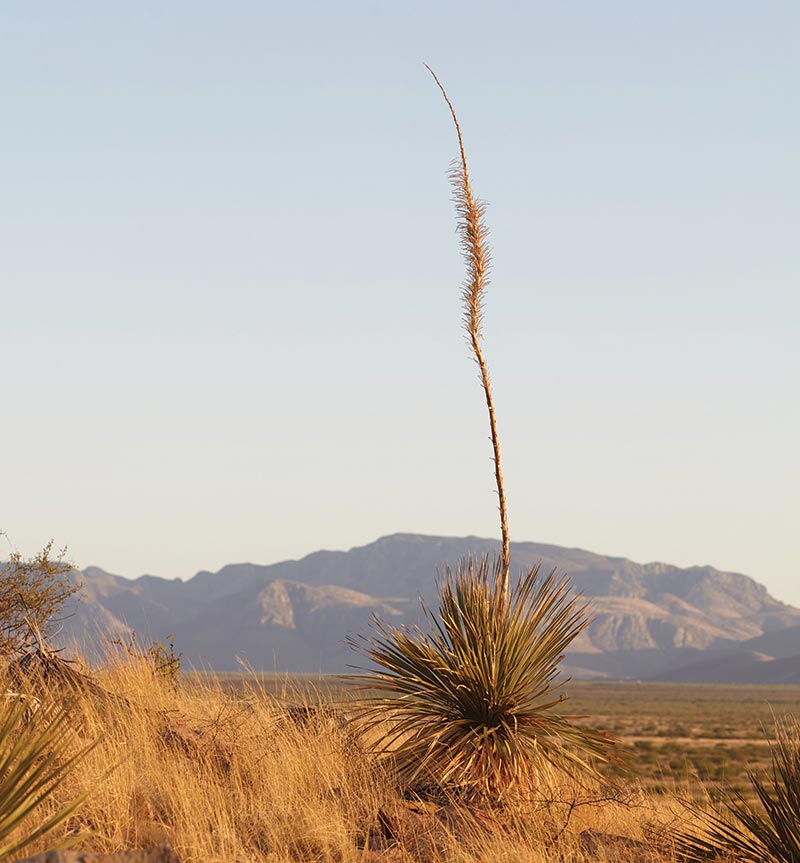
Sotol: Not Agave & Not a Cactus
- Sotol is a spirit made from a variety of plant in the Dasylirion family, native to the Sonoran and Chihuahuan deserts, as well as the American southwest.
- The name Sotol comes from the Nahuatl word "Tzolotzin"
- In all, there are 15 species of Dasylirion, but most sotol is made from only three:
- D. Wheeleri
- D. Leiophyllum
- D. Cedrosanum
- Called "The Desert Spoon" in English, sotol is a shrub-like plant that matures at between 8-22 years of age and, unlike agave, can continue living and blooming again after harvesting if harvested carefully above the root system.
- The plant has provided food, clothing, shelter, medicine and tools to the native inhabitants of these lands for thousands of years.
- Sotol grows wild between 3,000 and 6,500 feet elevation and thrives in the harshest of climates, often enduring below-freezing temperatures in the winter and wildfires in the summer.
Mexican Spirits
Production Map

Tequila
Tequila is a spirit made from at least 50% Blue Weber Agave (A. Tequiliana). However, high quality Tequilas should be produced using 100% Blue Weber. Most Tequila is produced in the state of Jalisco. While production processes vary between brands, most Tequilas are produced using a modernized process when compared to other Mexican spirits, such as mezcal and sotol. Jalisco / Limited municipalities in the states of Guanajuato, Michoacán, Nayarit, and Tamualipas.
Mezcal
Made from various species of the Agave plant. Although mezcal is traditionally a term used to describe all agave spirits, under modern laws, the term "mezcal" can only be used if the product is made in one of nine states in Mexico that are sanctioned under the Denominación de Origen. Most mezcal producers employ production methods that are non-industrial and require extensive manual labor. Oaxaca / Durango / Guanajuato / Guerrero / San Luis Potosí / Tamaulipas / Zacatecas / Michoacán / Puebla
Sotol
Mexican spirit made from several species of the Dasylrion genus of plants that grow mostly in north-central Mexico, into the southern U.S. states of Texas and New Mexico. Sotol producers employ many of the same traditional methods as mezcal producers, although there are very few remaining sotol producers due to longstanding persecution. Chihuahua / Durango / Coahuila
Bacanora
Bacanora is an agave spirit with a Denominación de Origen in the northern Mexican state of Sonora. The spirit it is made using traditional methods, primarily from the agave Angustifolia var Pacifica (an Espadín variation growing in Sonora). Sonora
Charanda
Charanda is an alcoholic spirit derived from sugarcane, similar to rum, typically associated with the central portion of the State of Michoacán in Mexico, particularly the Purépecha-populated areas in the vicinity of the prominently agricultural City of Uruapan. Michoacán
Raicilla
Raicilla is a spirit distilled from the agave plant, like Tequila and Mezcal. Originating in the south western portion of the Mexican state of Jalisco, traditionally raicilla has been created and sold without government approval, as the state of Jalisco was designated under Mexican laws for "Tequila" production only. Raicilla is essentially mezcal that does fall under the Denominación de Origen. The most common agaves species used to produce Raicilla include: Angustifolia; Maximiliana; Inaequidens; and Rhodacantha. Jalisco
Where can Sotol be Made?
Under the Designation of Origin for Sotol enacted in 2004, producers in only three states can market their products as Sotol: Durango, Coahuila, and Chihuahua. Despite having nearly the largest land area within its DO compared to Mezcal and Tequila, the Sotol category has an extremely low number of brands and producers as a result of laws prohibiting its production and years of persecution against sotol producers.
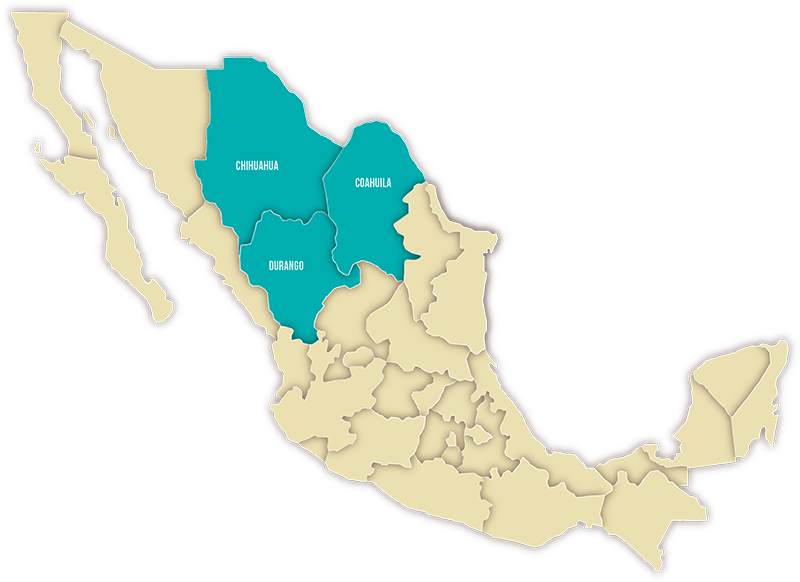
Denominations of Origin
(land area in hectares):
In Mexico:
Sotol: 52.4 million
(3 states)
Mezcal: 50 million
(limited municipalities in 9 states)
Tequila: 11 million
(limited municipalities in 5 states)
Around the Globe:
Scotch: 8 million
Cognac: 1.1 million
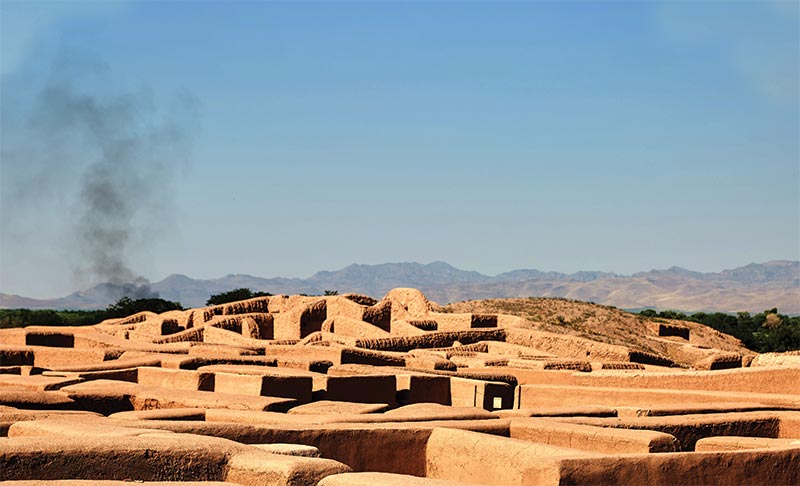
The Story of Don Cuco
Don Refugio Pérez Marquez, also known as "Don Cuco" is one of the few men that was making sotol in the latter half of the 20th century. He is directly responsible for carrying on the tradition of sotol distillation in the region of Madera in west-central Chihuahua during a long period when sotol production was illegal and highly persecuted. To avoid attention, sotoleros built their tiny rustic distilleries - called vinatas - under the cover of the Sierra Madre mountains to the west, using mules to transport their distillates down rough trails to their ranches in the high desert valley below.
The making of sotol is an art form, one that Don Cuco learned from his father and grandfather who lived among the native Tarahumara people in Chihuahua. Don Cuco passed this art to his children, who carried on the tradition and are reintroducing a generations old family drink to the world.
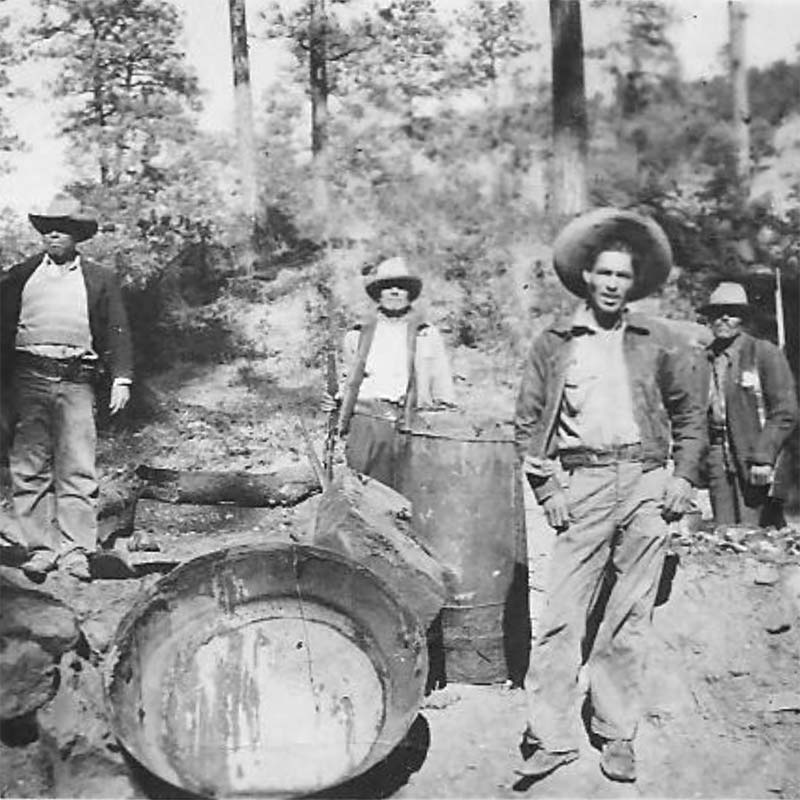
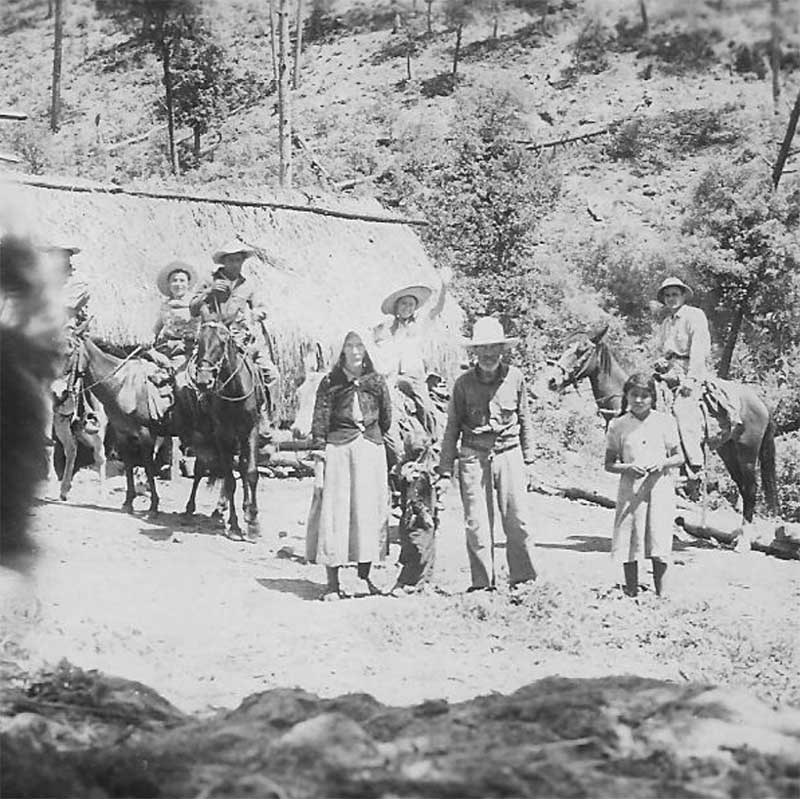
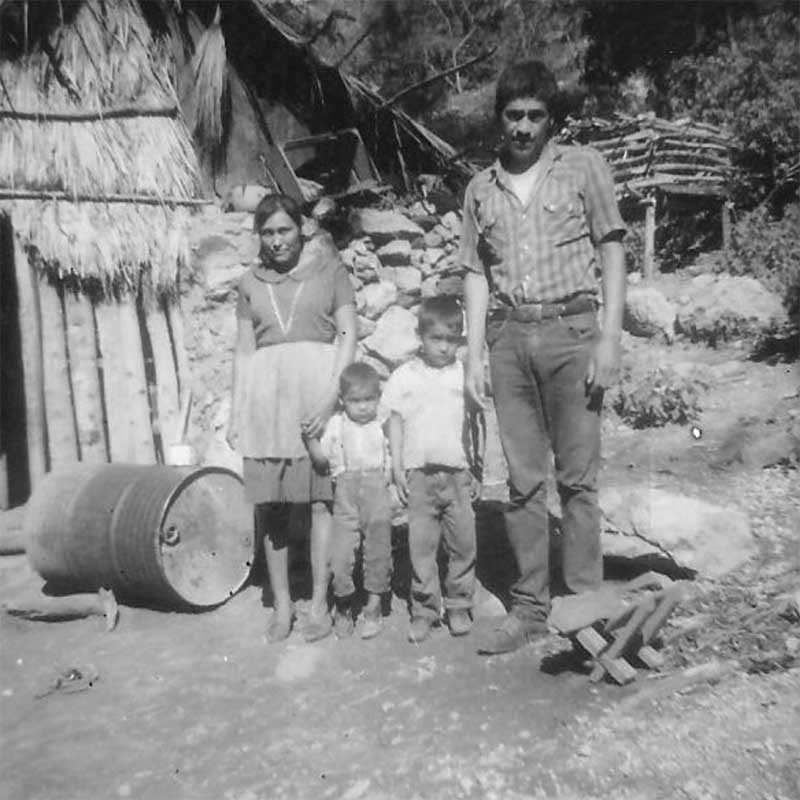
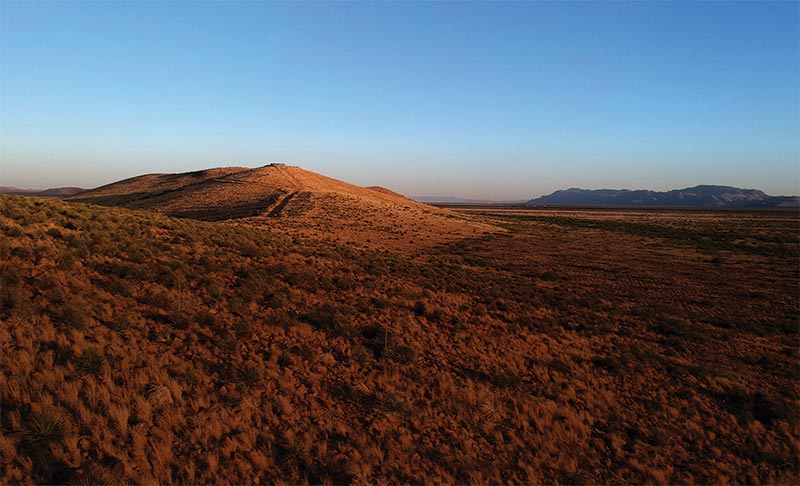
Sotol in the
Prohibition Era
"In times when our nations are so badly divided and when our understanding of each other is rapidly eroding, it's reassuring to know that the architecturally elegant and drought-proof sotol knows no borders."
In the 1920s, soon after the beginning of the Prohibition era, the US mafia, together with what are now a couple of elite families of Juárez, began opening up their own production facilities for cheap whiskey and brandy on the Mexican side of the border across from El Paso. At the same time, artisanal sotol production went into rapid decline. The artisan sotoleros - burdened with an arduous task of harvesting wild sotol and a long production process - couldn't compete with the cheap, high volume grain liquor being churned out in Ciudad Juárez, which lied on the border and had direct access to illicit markets to the north. The new liquor magnates, together with their associates in government, also began cracking down on the sotoleros - spreading the new narrative that sotol was not the drink of the gente de razón but only of the poor and uncouth. There was also a coordinated effort to eradicate artisanal sotol production, often through violence and persecution.
This narrative that sotol is a poor quality spirit, has over the last century nearly killed the tradition of sotol in Chihuahua. There, like elsewhere in Mexico, cheap, industrial tequila has come to dominate the alcohol market.

Sotol Regulation
- Sotol received protected status under a Denomination of Origin in 2004. It is recognized by 27 countries, but not the U.S.
- NOM 159 SCFI 2004 - The law that protects the Denomination of Origin (DO) and establishes Sotol as a category. According to the NOM, sotol must meet the following requirements:
- Yeasts. Either native or commercial yeasts can be used.
- Sotol can be produced in the following three northern states of Mexico: Chihuahua, Coahuila, Durango.
- Sugars. Sotol allows the use of sugars fermented from sources other than the Dasylirion plant, up to 49%.
- Production processes. Both artisanal and industrial methods (autoclave, diffusor, etc) are allowed.
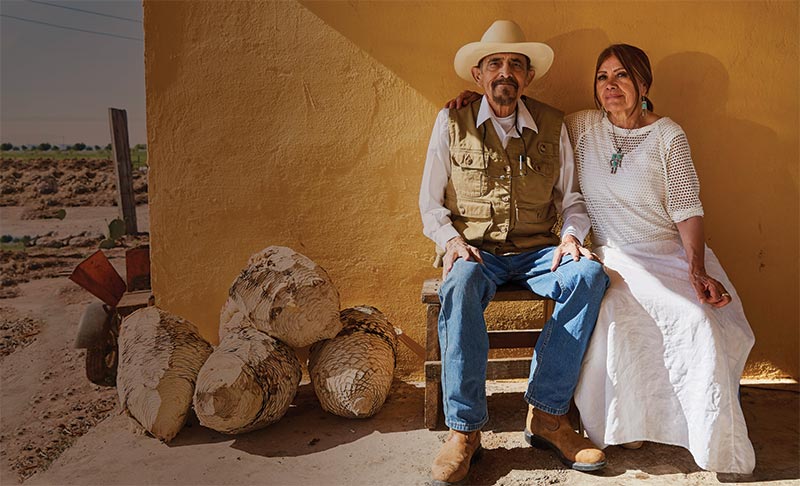
In Memoriam
Celso Jacquez
5th Generation Sotol Distiller
In 2018, the Jacquez family lost their patriarch, Don Celso Jacquez, after a lengthy battle with cancer. Don Celso's first passion was his family, but his second passion was sotol. As a child, Don Celso recalled riding burros for days, deep into the mountains west of Madera with his grandfather, the legendary Don Cuco. It was there that Celso first learned the art of sotol distillation from his grandfather and uncles. Celso would go on to become the first producer to (legally) export sotol with the family brand, Don Cuco.
In addition to being a sotol producer, Don Celso was an entrepreneur, politician, and veteran of the U.S. Army. Celso was the former president of the Janos Municipality and Chihuahua representative on the Border 2012 environmental commission, a binational project of the Mexican and U.S. governments. Celso Jacquez's impact on the survival and resurgence of the sotol category was monumental. In spite of a history of persecution and regulatory roadblocks to sotol's advancement, he worked tirelessly to promote his family's heritage and tradition of sotol production. He played a huge role in moving the government toward recognition of Sotol as a distinct category of Mexican spirit under its own Denomination of Origin in 2004. Celso is survived by his children, Joseph, Jacqueline, and Jacob, along with his numerous grandchildren, and beloved wife, Emma Perez Jacquez.
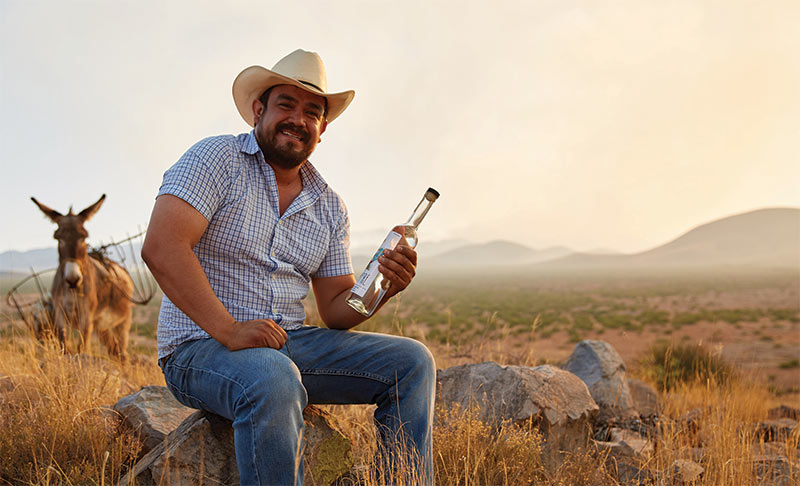
Jacob Jacquez
6th Generation Sotol Distiller
Jacob Jacquez learned the art of sotol production from his father, Celso Jacquez. After growing up on his family's ranch in Janos, Jacob attended high school just outside of Nuevo Casas Grandes, followed by college and graduate school at the University of New Mexico. After college, Jacob returned to his family ranch in Janos to settle into the family business and continue his family's tradition of sotol distillation.
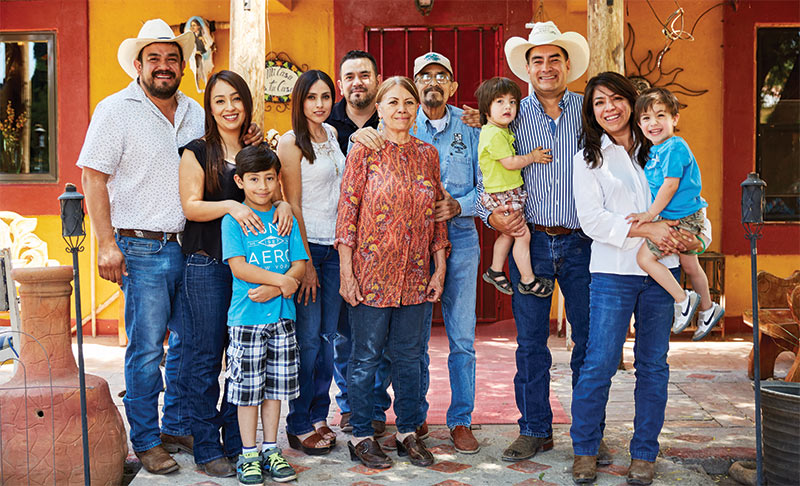
Producers: Jacquez Family
The Jacquez family are one of the very few families that continued making Sotol throughout the 20th century. In the late 90's, as one of only a few producers in the sotol category at the time, they were heavily involved in working with the Mexican government to establish a Denomination of Origin for Sotol, which happened in 2004. In addition to making sotol, they run several businesses, including a farm at their ranch and a nearby roadside hotel to host visitors nearby. Leaders in their community, the family has done vast amounts of charitable and philanthropic work to improve the lives of local families in Chihuahua. They've also gone to great lengths to preserve the history of the border regions between Chihuahua, New Mexico, and Texas.

Our Team
Manuel Mendez Ponce
Maestro Sotolero
At age 74, Don Manuel is the oldest and most experienced sotolero at Sotol Don Celso. His work began at a time when sotol distillation was illegal in Chihuahua and production was much smaller and rustic, with vinatas operating clandestinely, oftentimes moving from location to location to avoid being found. Like Don Celso, Manuel's life work stands as a bridge between past generations of sotoleros and the next generation that will take sotol into the future.
Our Team

Alonso Torres

Joaquín Garcia Bustillos
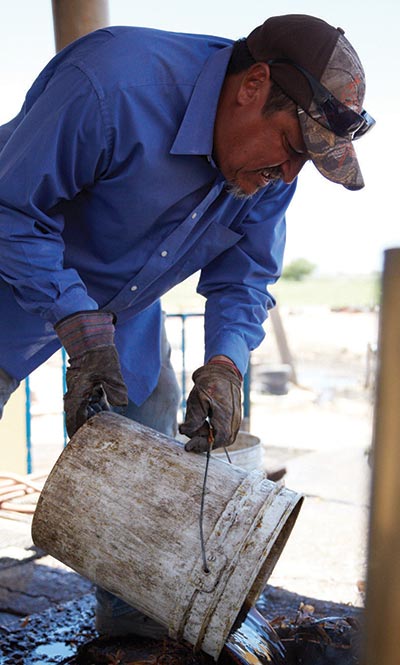
Ramón Rene Guzman Martinez

Marco Antonio Perez Mendez
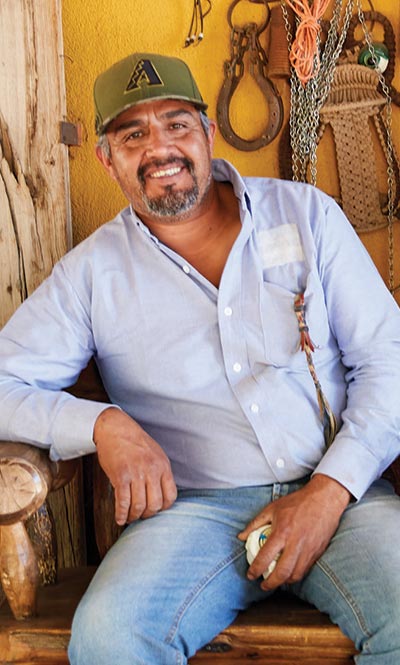
Guillermo Valenzuela Valenzuela

Timoteo Nevarez Bustillos

Our Vinata
Rancho La Guadalupana
Our vinata - or distillery - is located at the Jacquez family ranch, on the outskirts of the tiny agricultural town of Janos, Chihuahua, located 45 miles south of the border crossing at Antelope Wells, NM, and 135 miles from El Paso to the east. The vinata features a geodesic dome, that was built to resemble the sheared piña of a sotol plant.
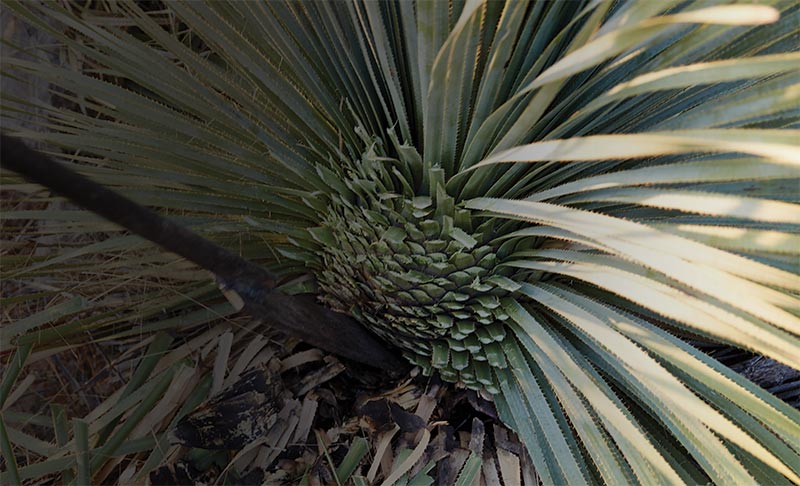
Where We Harvest
Camargo, Chihuahua
The sotol plants used to make Sotol Por Siempre are harvested primarily in Camargo, Chihuahua, about a 6-hour drive (500km) to the southeast of the Jacquez family ranch in Janos.
Due to the dry, desert landscape in Camargo, the sotol plants have concentrated sugars, making them desirable for sotol production.
Janos, Chihuahua
Sotol plants from the local region around Janos are also used for production, but in a much smaller quantity.
During the rainy season in July, the sotol plants in the region soak up water, so they are only harvested at certain times of the year.
Re-planting Efforts
In 2018, the Jacquez family began cultivating sotol plants on their family ranch in Janos, in order to build sotol stocks for the future. They made another planting in 2019 and intend to plant every year into the future.
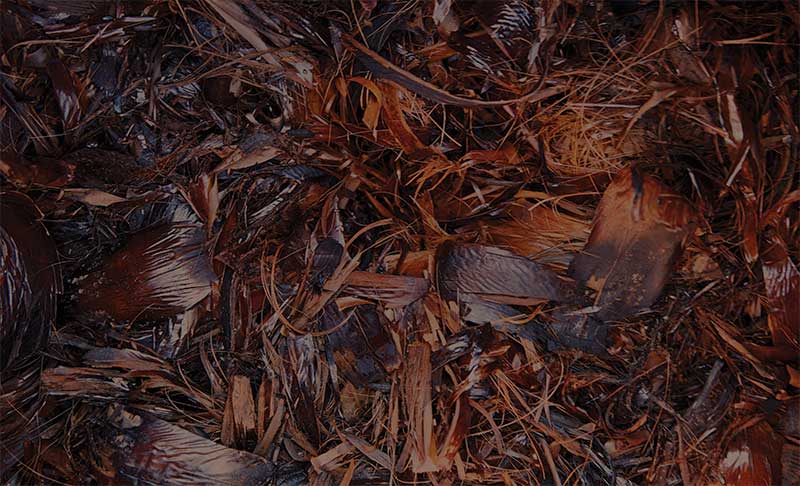
Permitting of Sotol Harvest
- To harvest sotol in Chihuahua, a permit is required. The permit grants the right to harvest sotol outside of the local municipality, but also grants the right to transport the piñas harvested on another person's land on federal highways.
- Prior to a permit being granted, an agricultural engineer must survey the land intended to be harvested to ensure the sotol plants are mature and that the proper methods will be used.
- Permits must be renewed every 5 years.
- Currently, the Jacquez family has a permit to harvest from a private ranch in Camargo, but is looking at 5-10 ranches from which they can harvest small amounts of sotol each year in a sustainable manner.
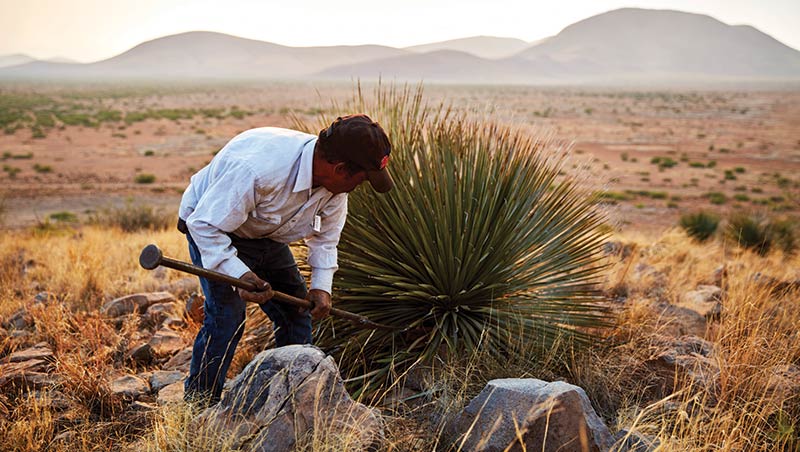
Harvesting Sotol
- The serrated, spiky leaves of the sotol plant are cut by hand off of the dense core, also referred to as the piña.
- Wild sotol takes 8 to 15 years to reach maturity depending on its environment.
- Due to the plant's dryness and low sugar content, it takes about one piña to make a single bottle of sotol.
- If uprooted carefully, a sotol plant can be harvested without killing the plant, allowing it to regenerate for multiple harvests.
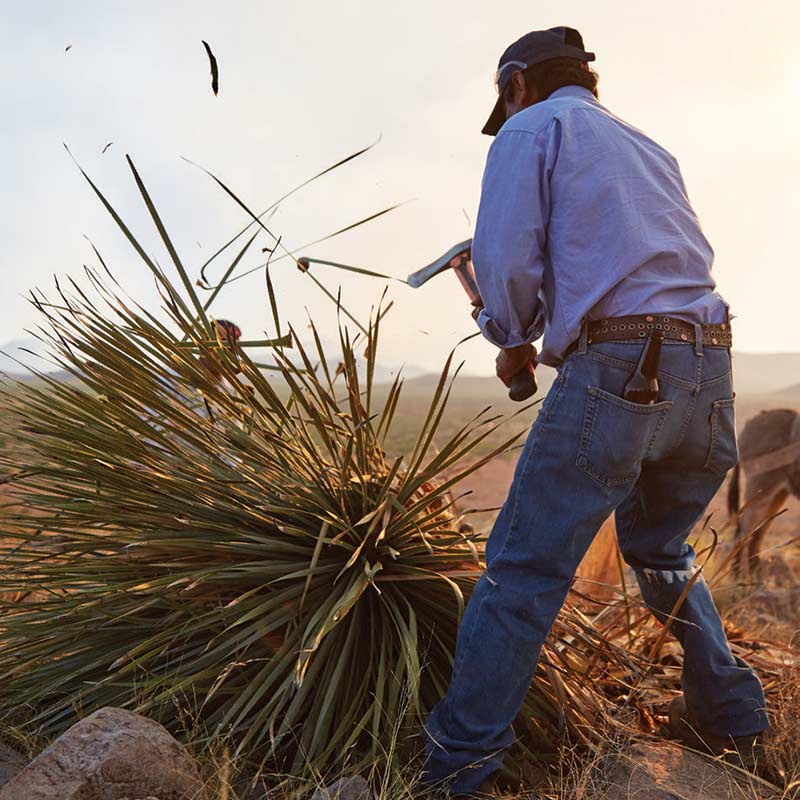
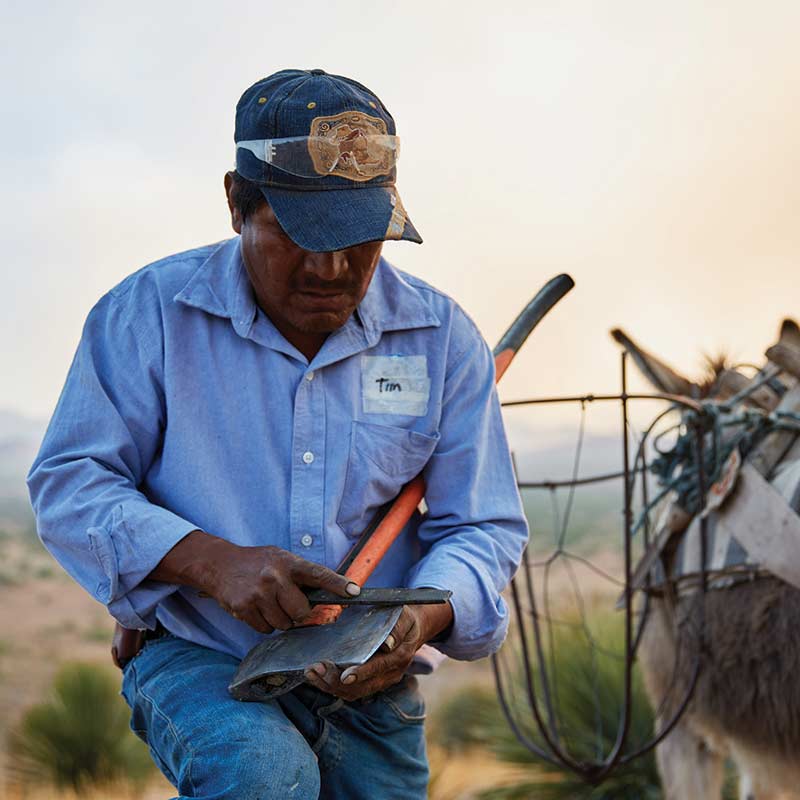
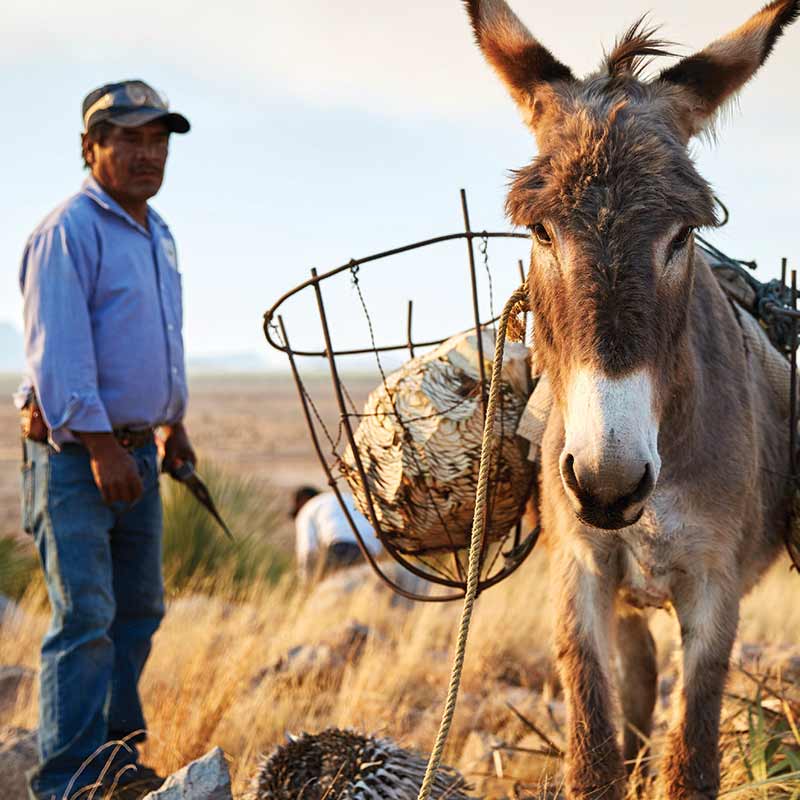
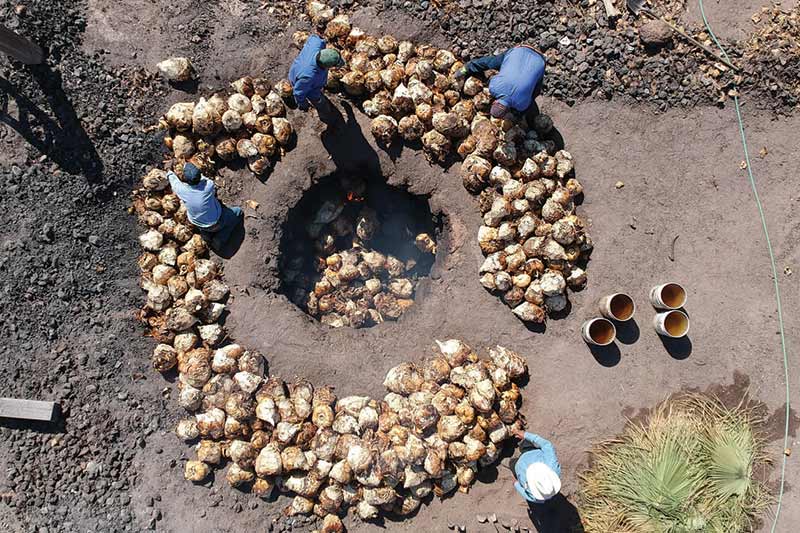
Roasting Sotol
- The piñas of the sotol plants are transported back to the vinata and baked underground in an earthen pit oven, lined with volcanic stones.
- A fire is built in the pit using hard woods.
- After reaching optimal temperature, the team works quickly to load and cover the piñas, to ensure the oven stays hot.
- The piñas are soaked prior to cooking to prevent burning, as they are extremely dry.
- Also to prevent burning, a wooden stake is carefully placed and driven into the buried pit and several liters of water are quickly poured in to manage hot spots.
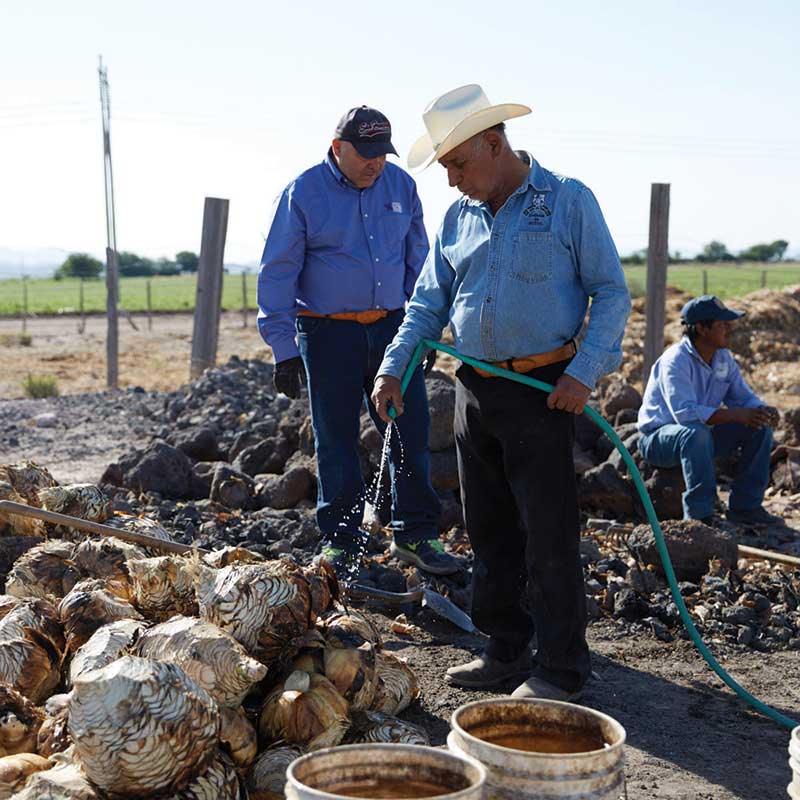
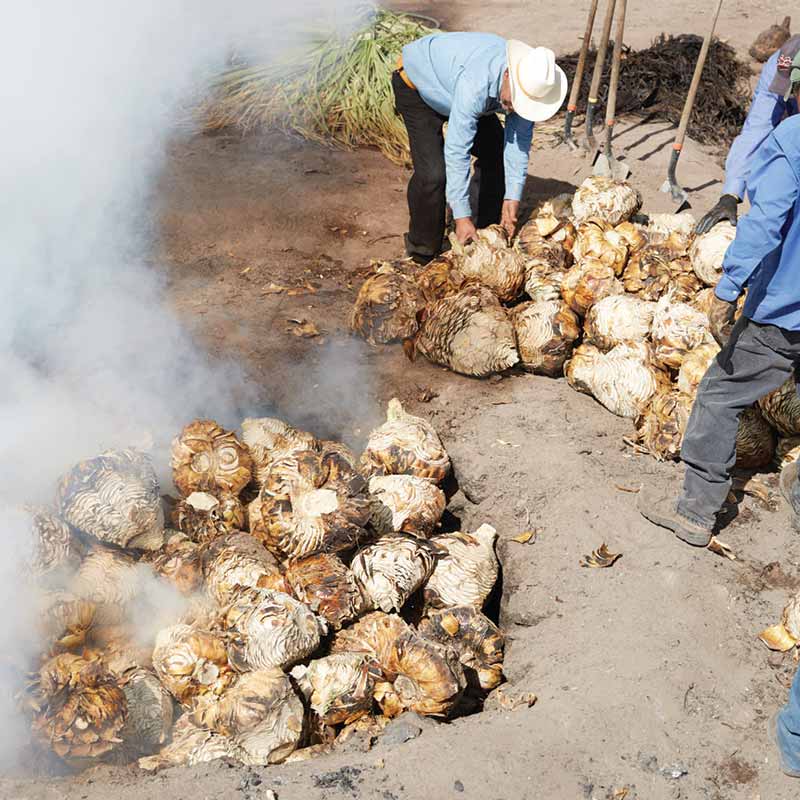
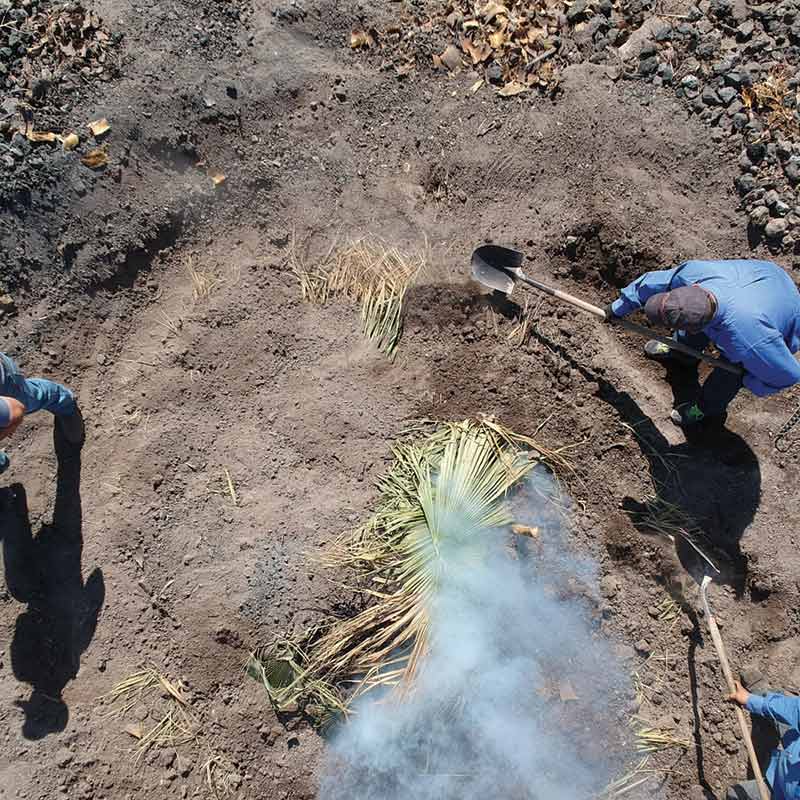
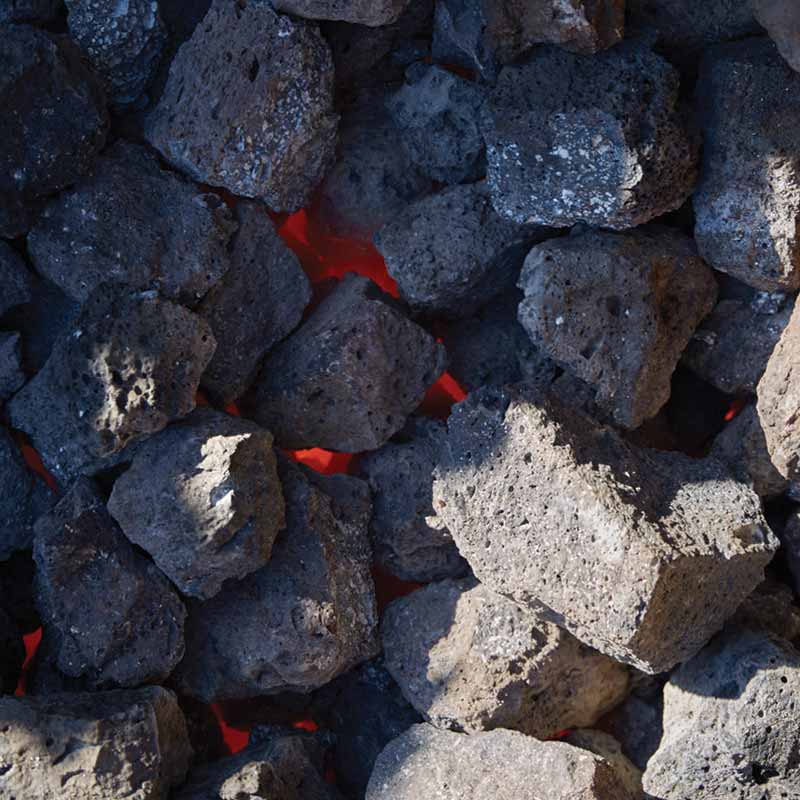
Fact:
The woods used to fire the oven are white and red oak, mesquite, cotton wood, and pine.

Crushing Process
After being roasted, the sotol plants are shredded in order to open up their fibrous core so that the water and bacteria can easily reach the cooked sugars contained within during the fermentation process.
In the summer, shredding is done by hand, with axes and machetes.
In the winter, the vinata employs a small shredder so the production team can avoid long spells outside in the cold temperatures.
The center of the sotol plant, called the "Choyaca," must be removed prior to fermentation as it imparts a bitter flavor.

Fermentation
The shredded, roasted sotol is loaded into fermentation vats in a long hallway of the vinata. The vats are made of cement and lined with pine. Only wild yeasts are used for fermentation, which lasts between 4-8 days depending on the temperature outside. Fermentation is aided by heat in the warmer months. Once the fermentation is complete, the mash (Mosto) is loaded into the still.
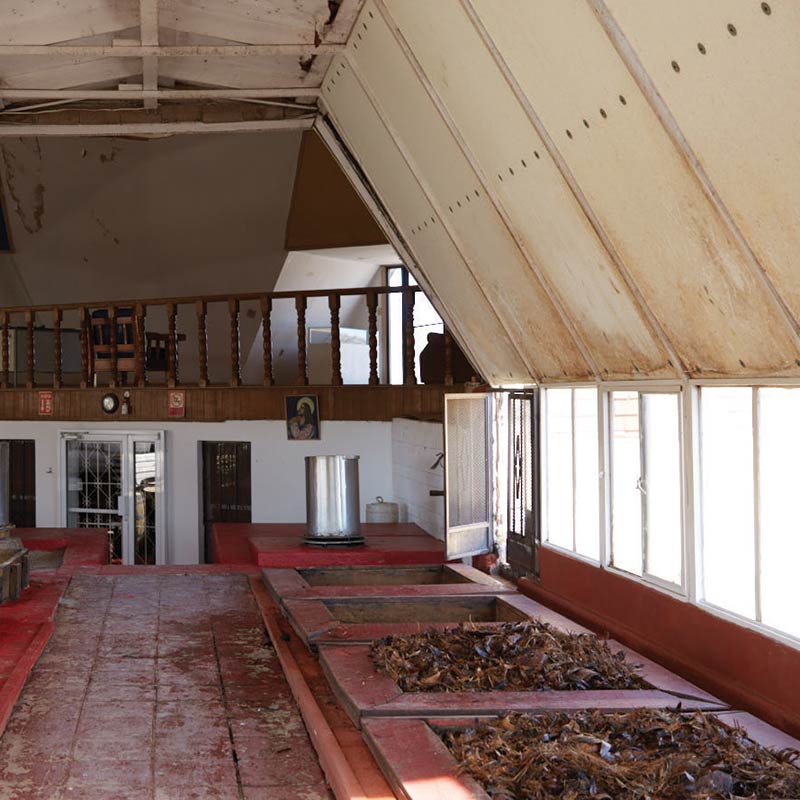
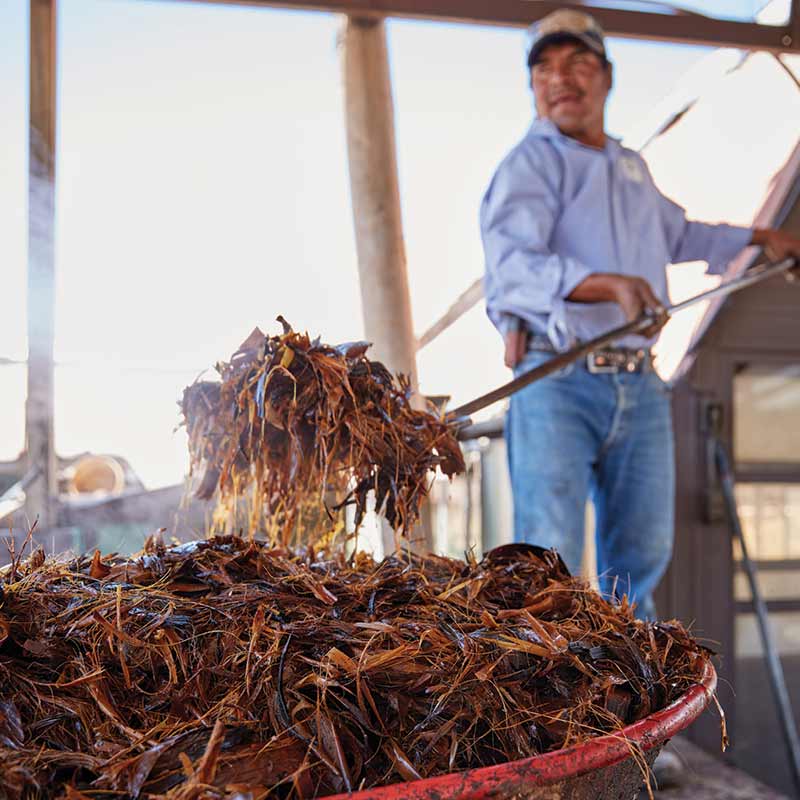
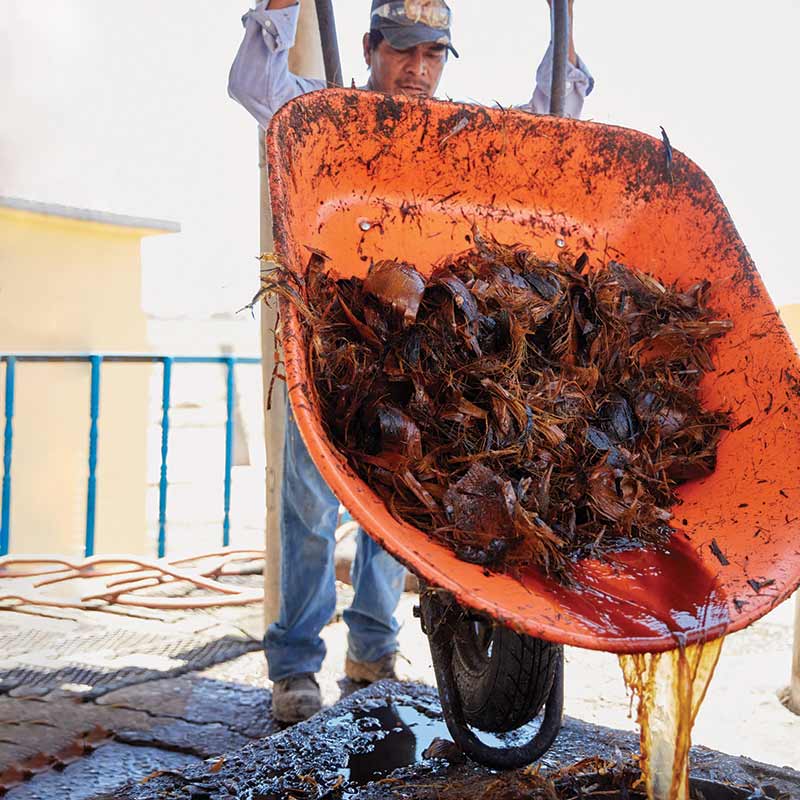
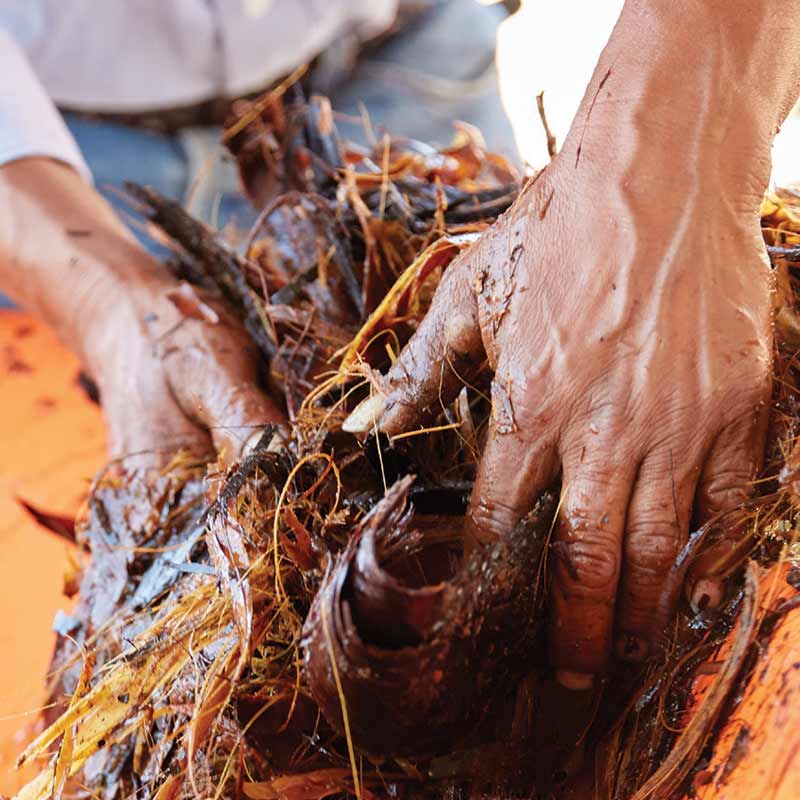

Distilling Sotol
Copper pot stills are used to heat the fermented sotol mosto. The stainless steel still caps atop the ovens are intentionally cylindrical, to mimic the hollowed out logs that were used by past generations.
Two distillations take place. On the first distillation, the still is heated with cottonwood and pine. On the second distillation, a gas fire is used to heat the still, in order to better control the cuts of the final distillate.
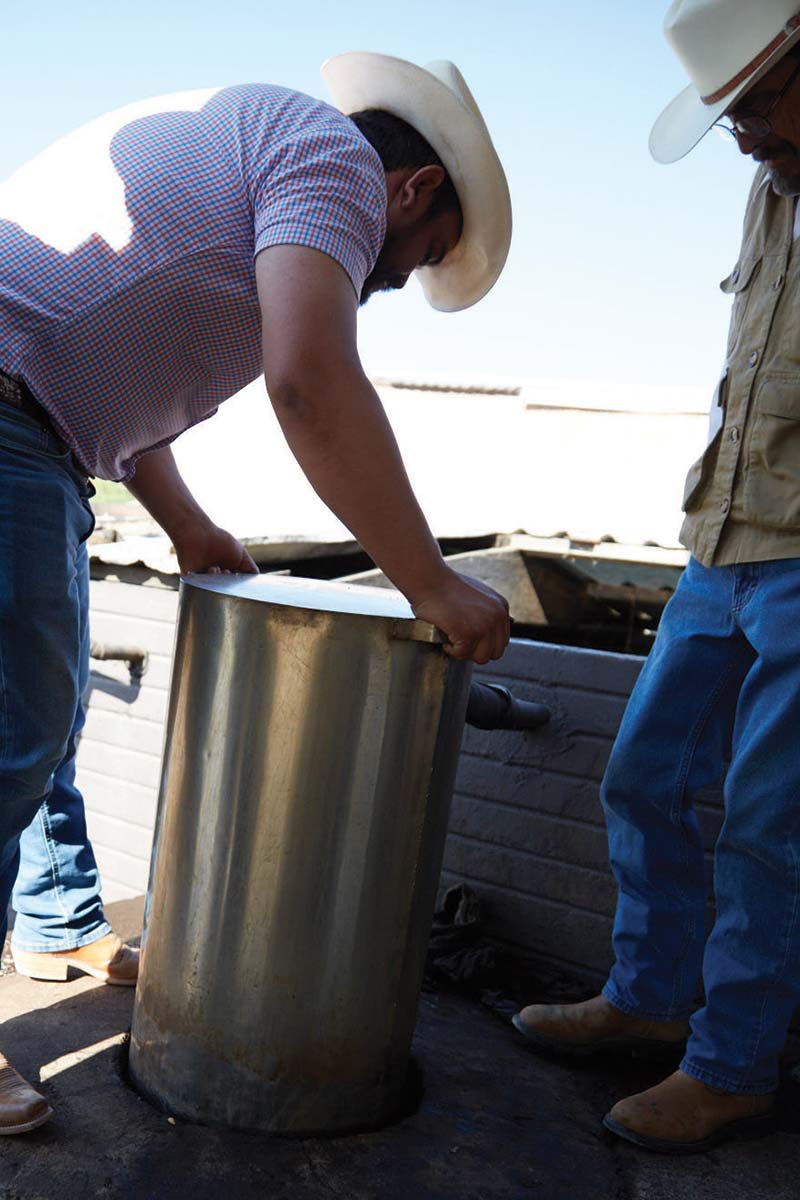
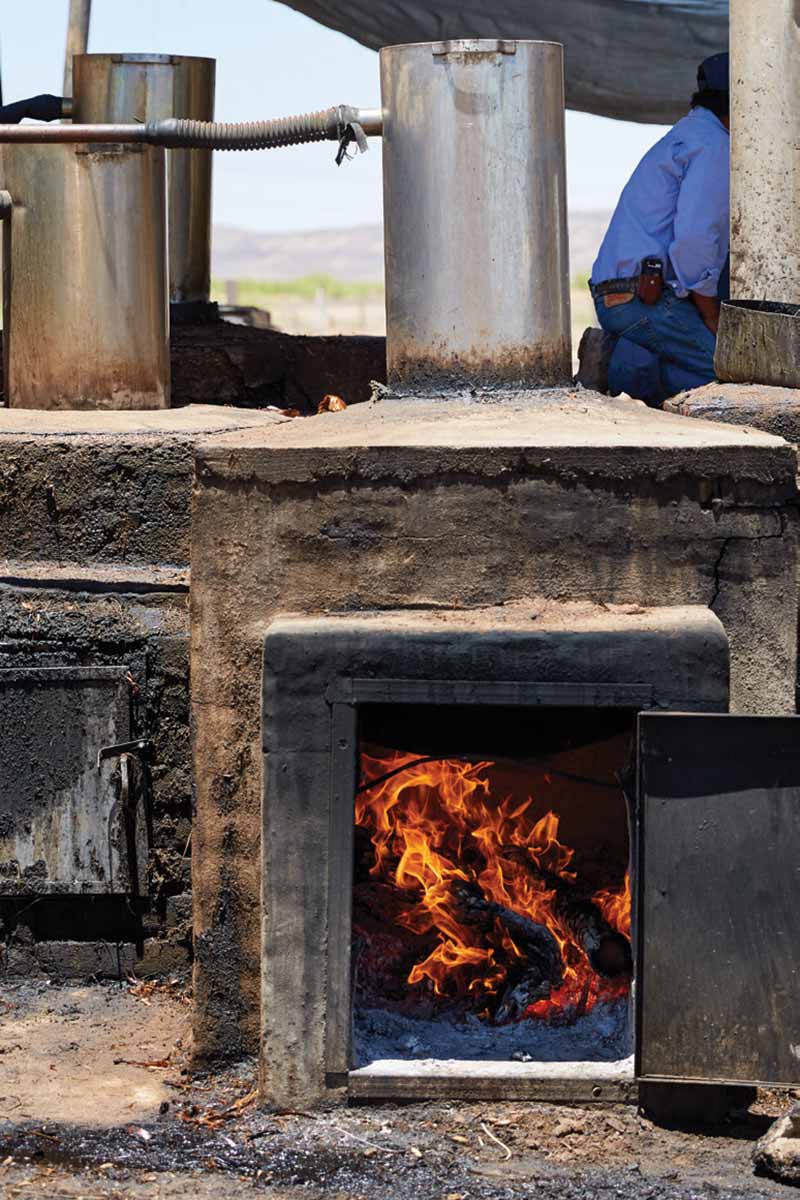
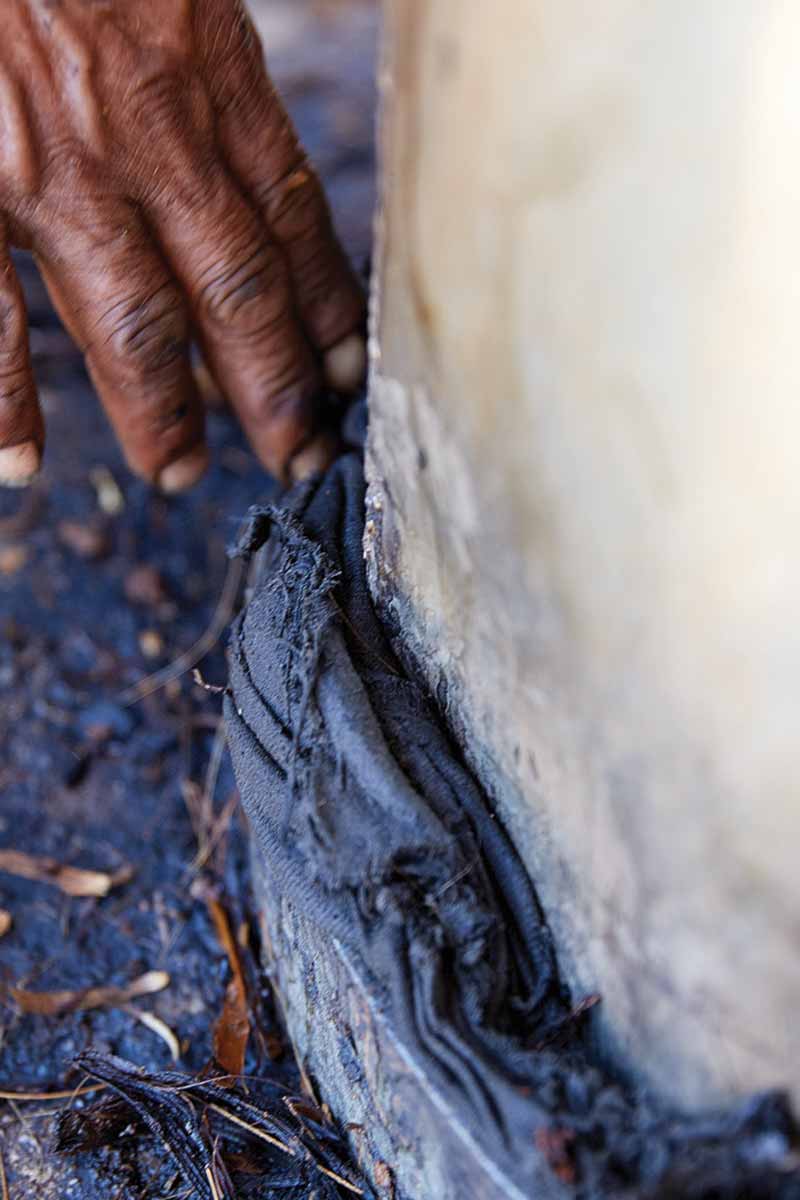
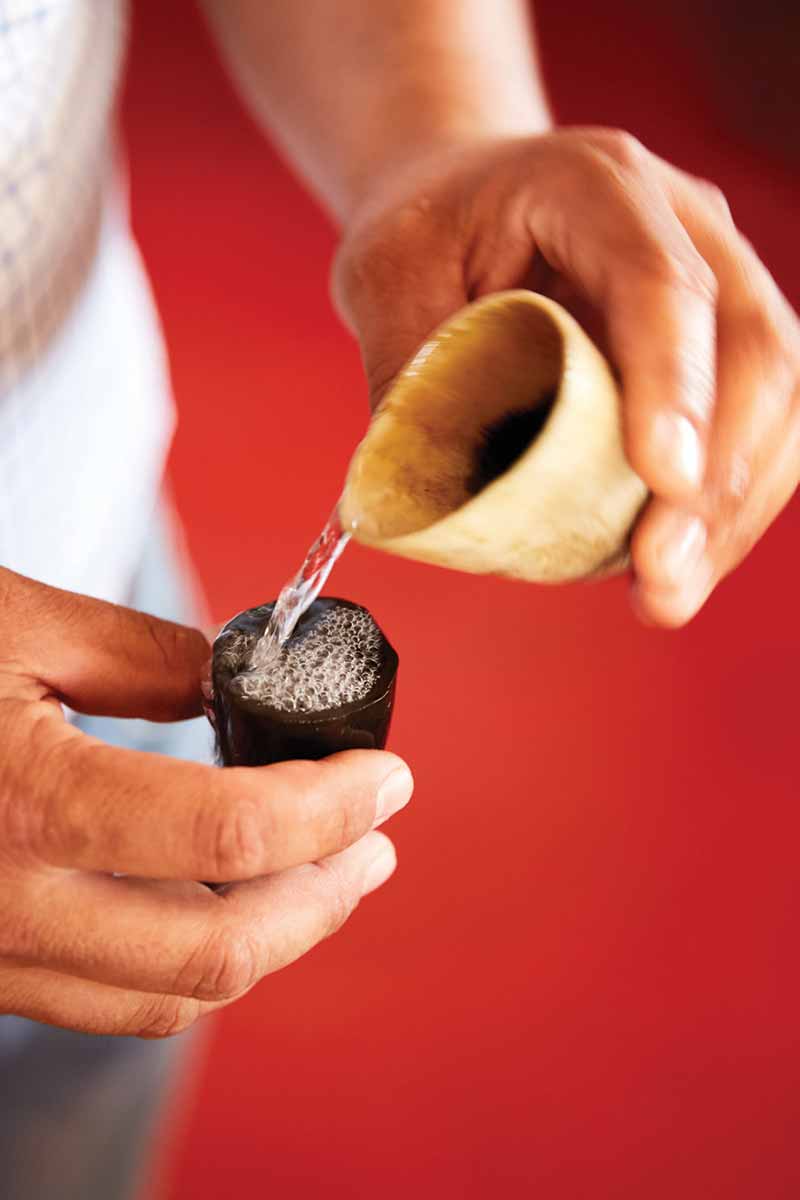

Why Sotol Por Siempre
- 6th Generation, family-owned producer
- Artisanal Production
- Wild-harvested
- Cooked in earthen oven
- Hand-crushed
- Open-air fermentation
- Twice-distilled in copper pot still
- Only artisanal sotol expression at 45% alc./vol. that is priced for cocktails
- Wide distribution (currently 38 states)
- National brand awareness in Tequila and Mezcal communities
Current Distribution
Footprint
38 states of distribution since launch in 2015

Use Sotol in Classic Cocktail Riffs
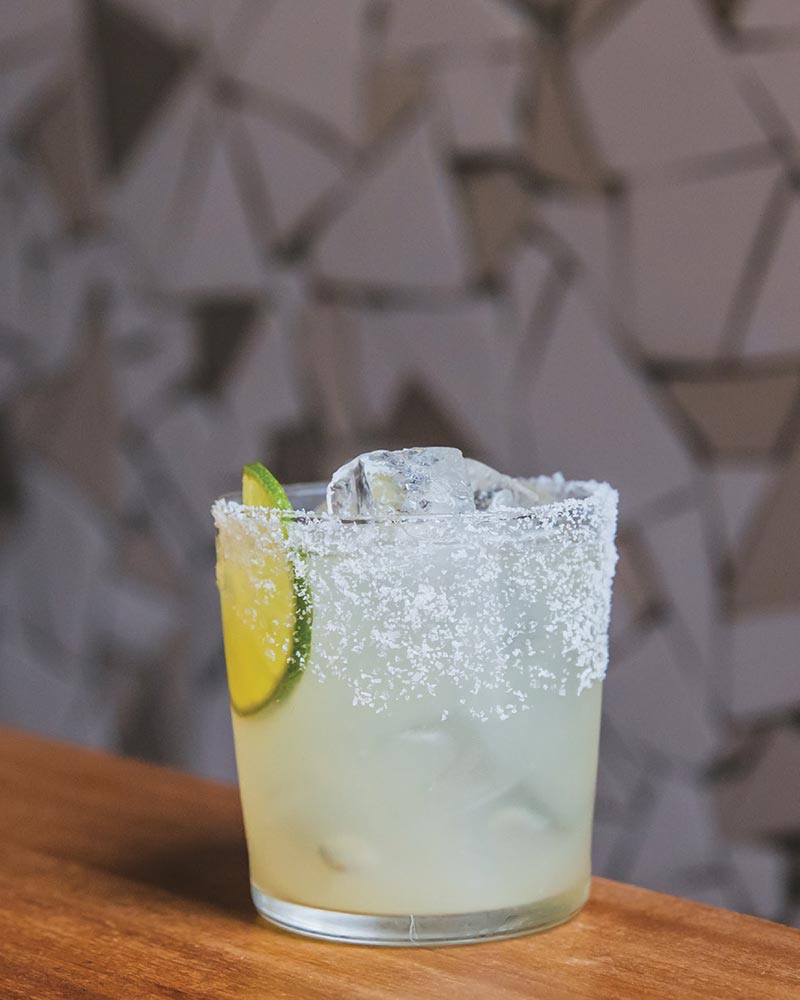
Sotol Margarita
- Ingredients:
- 1.5 oz. Sotol Por Siempre
- .75 oz. Giffard Curaçao Triple Sec
- .75 oz. Fresh-squeezed lime juice
- .50 oz. Simple syrup
- Method:
- Combine all ingredients in a shaker with ice. Shake well and strain over fresh ice into a rocks glass with salted rim.
- Garnish:
- Lime wheel
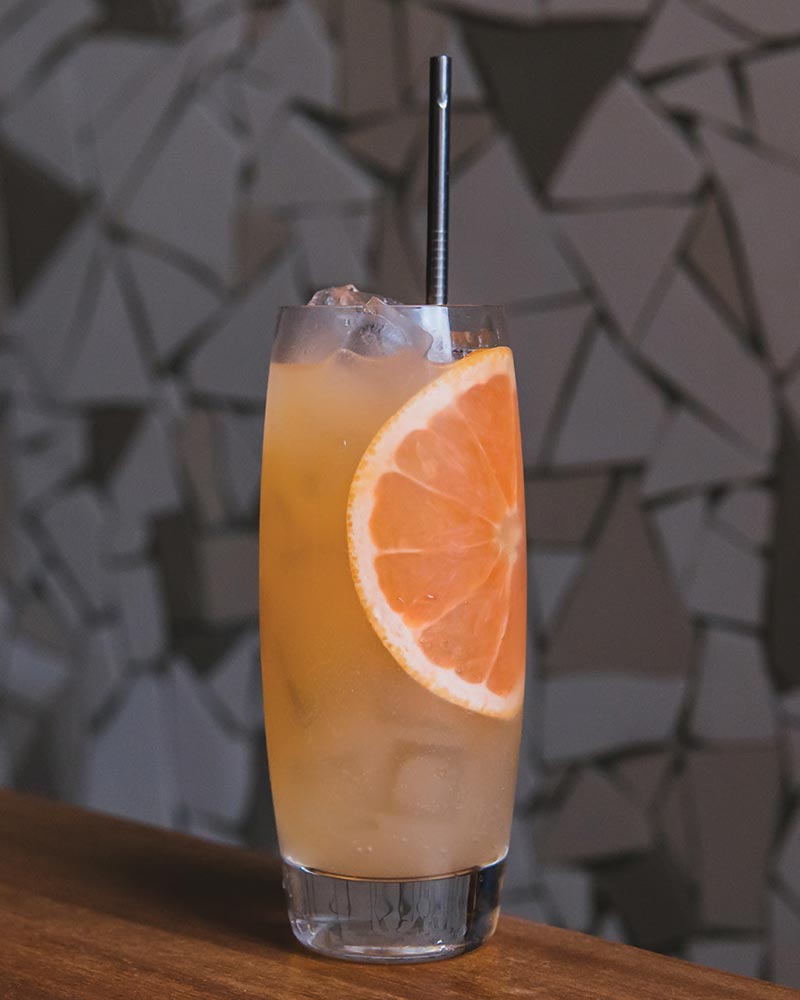
Sotol Paloma
- Ingredients:
- 1.5 oz. Sotol Por Siempre
- .75 oz. Giffard Pamplemousse
- .75 oz. Fresh-squeezed lime juice
- 3.0 oz. Grapefruit soda
- Method:
- Combine all ingredients except soda and shake with ice. Strain into a collins glass over fresh ice and top with grapefruit soda. Stir briefly.
- Garnish:
- Grapefruit slice
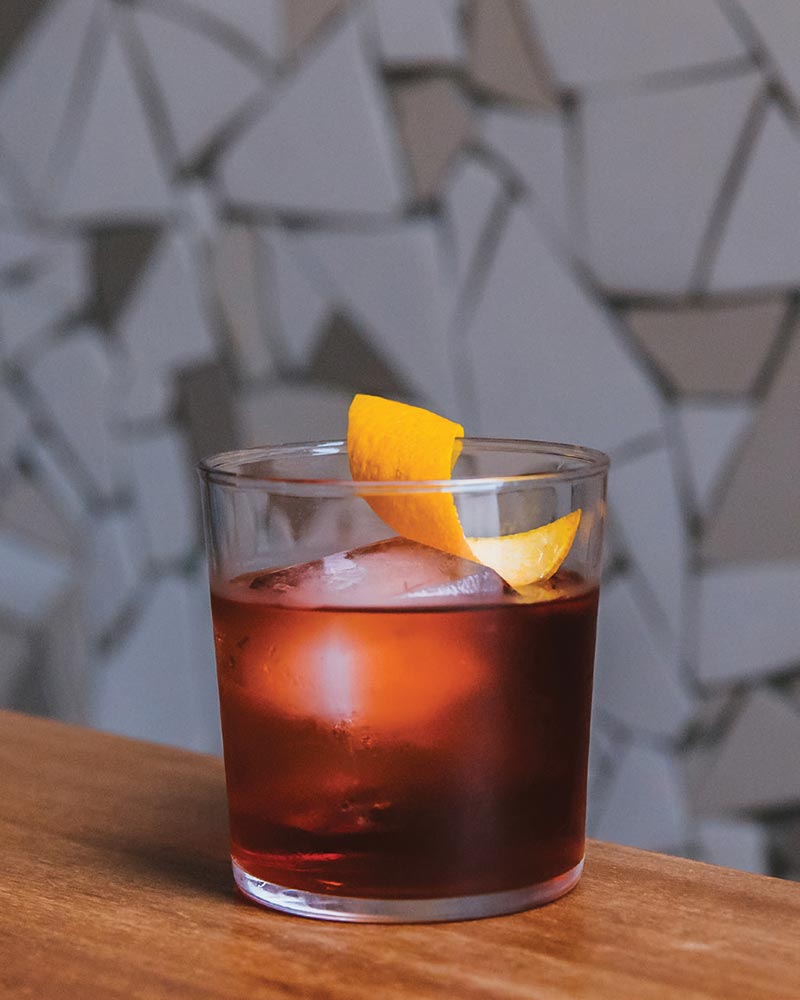
Sotol Negroni
- Ingredients:
- 1.5 oz. Sotol Por Siempre
- .75 oz. Blanc Vermouth
- .75 oz. Suze
- Method:
- Combine all ingredients in a mixing glass with ice and stir. Once chilled and diluted, strain into a rocks glass over a large ice cube.
- Garnish:
- Orange peel
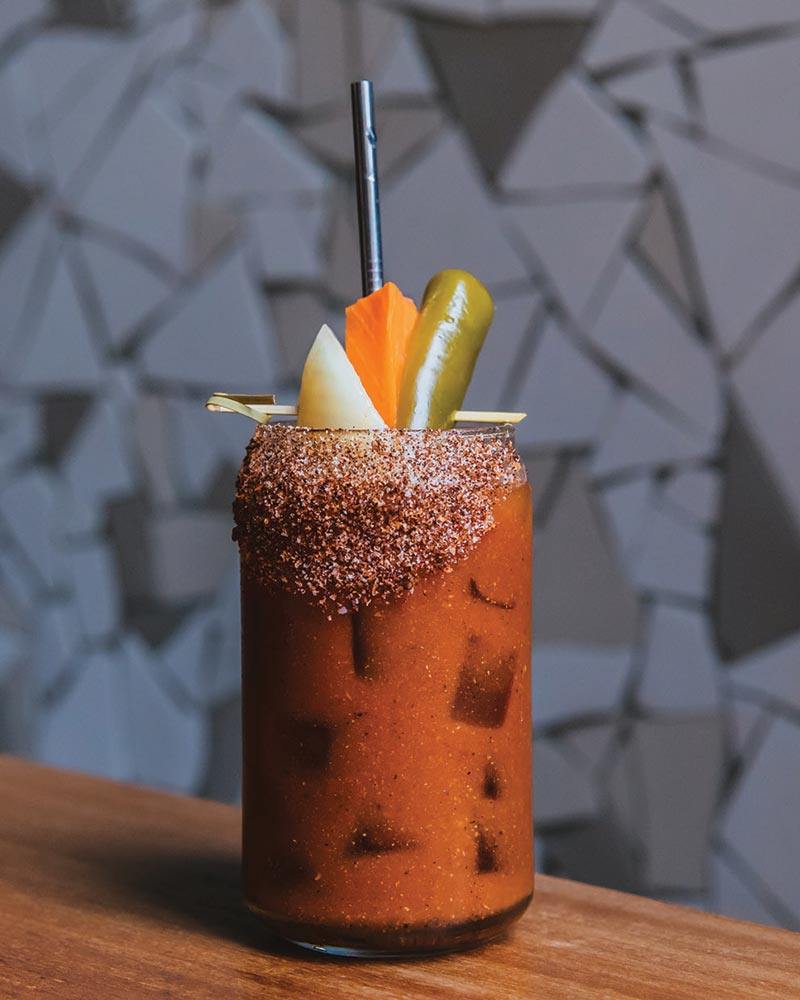
Sotol Bloody Mary
- Ingredients:
- 1.5 oz. Sotol Por Siempre
- 4.0 oz. Bloody Mary Mix
- Method:
- Combine ingredients in a shaker with ice. Shake gently to incorporate. Strain into a tall glass with a salted rim, over fresh ice.
- Garnish:
- Pickled vegetables
Signature
Cocktail Recipes
Sotol is a versatile base spirit in crafting cocktails. With more character than tequila and higher herbal aromatics than mezcal, sotol is useful in a wide variety of cocktail applications.
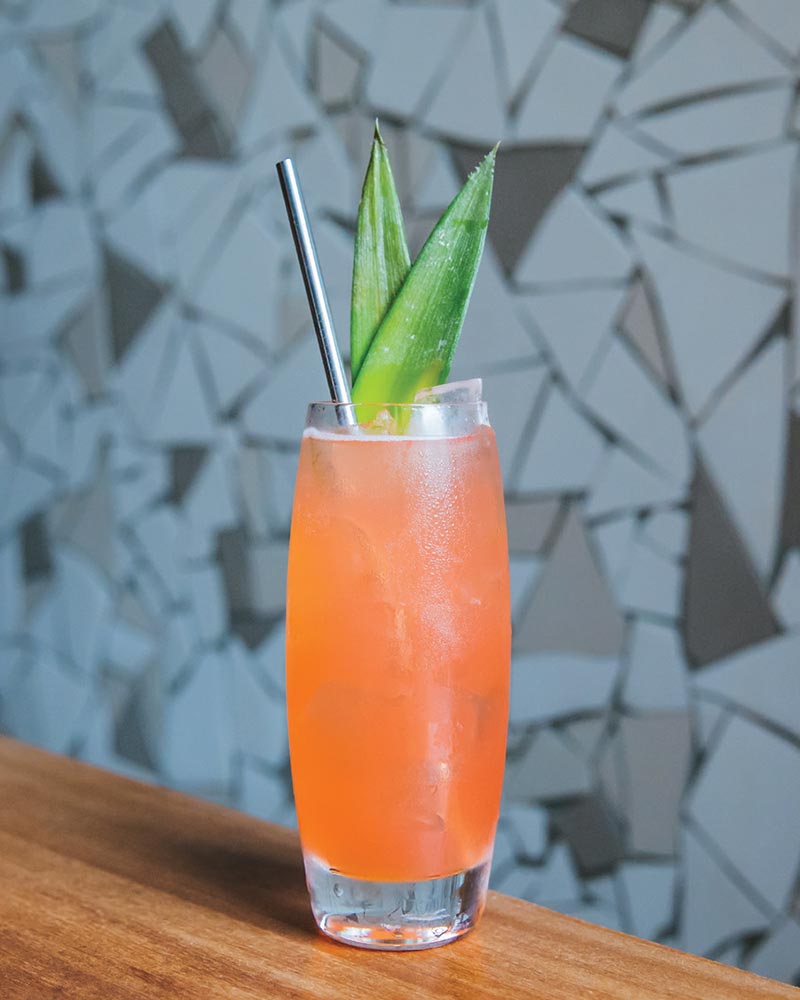
Desert Bird
- Ingredients:
- 1.5 oz. Sotol Por Siempre
- .50 Campari
- .50 oz. Pineapple juice
- .50 oz. Lime juice
- .50 oz. Simple syrup
- Soda
- Method:
- Combine all ingredients except soda and shake with ice. Strain into a collins glass over fresh ice and top with soda. Stir briefly and garnish.
- Glassware:
- Collins
- Garnish:
- Pineapple frond
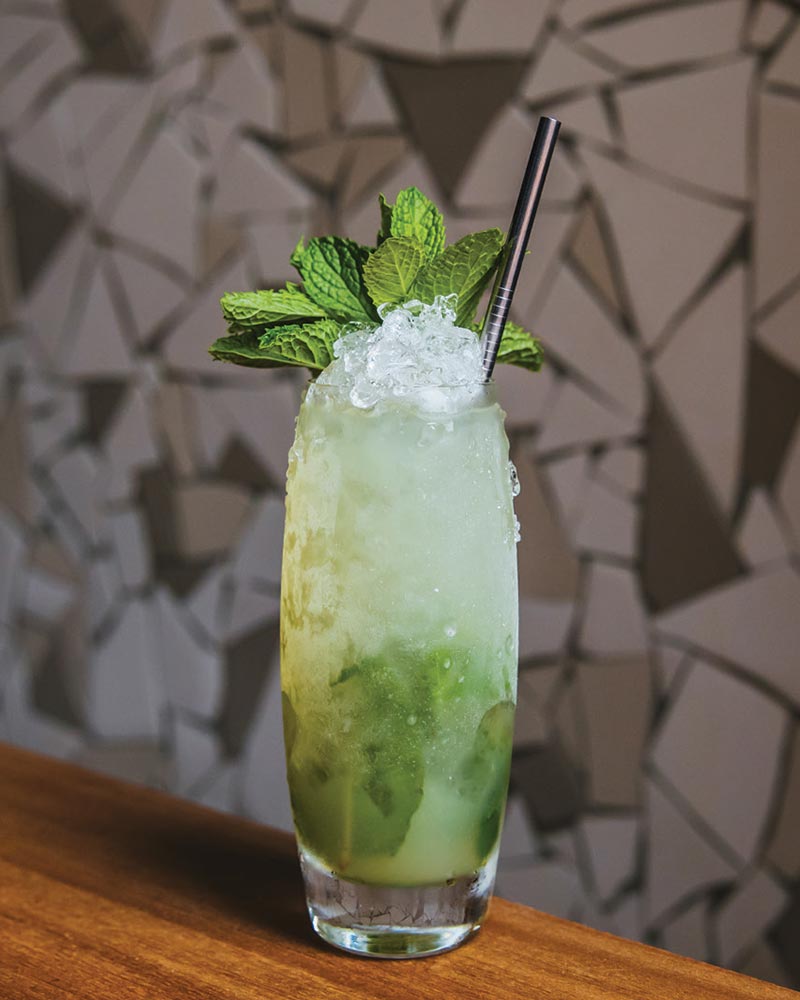
Sotol Swizzle
- Ingredients:
- 1.5 oz. Sotol Por Siempre
- .50 oz. Green Chartreuse
- .75 oz. Giffard Caribbean Pineapple Liqueur
- 1.0 oz. Fresh pineapple juice
- 1.0 oz. Fresh lime juice
- 5 mint leaves
- Method:
- Combine all ingredients and shake with ice. Strain into a collins glass over crushed ice. Add ice to create mound.
- Glassware:
- Collins
- Ice:
- Crushed
- Garnish:
- Mint bouquet
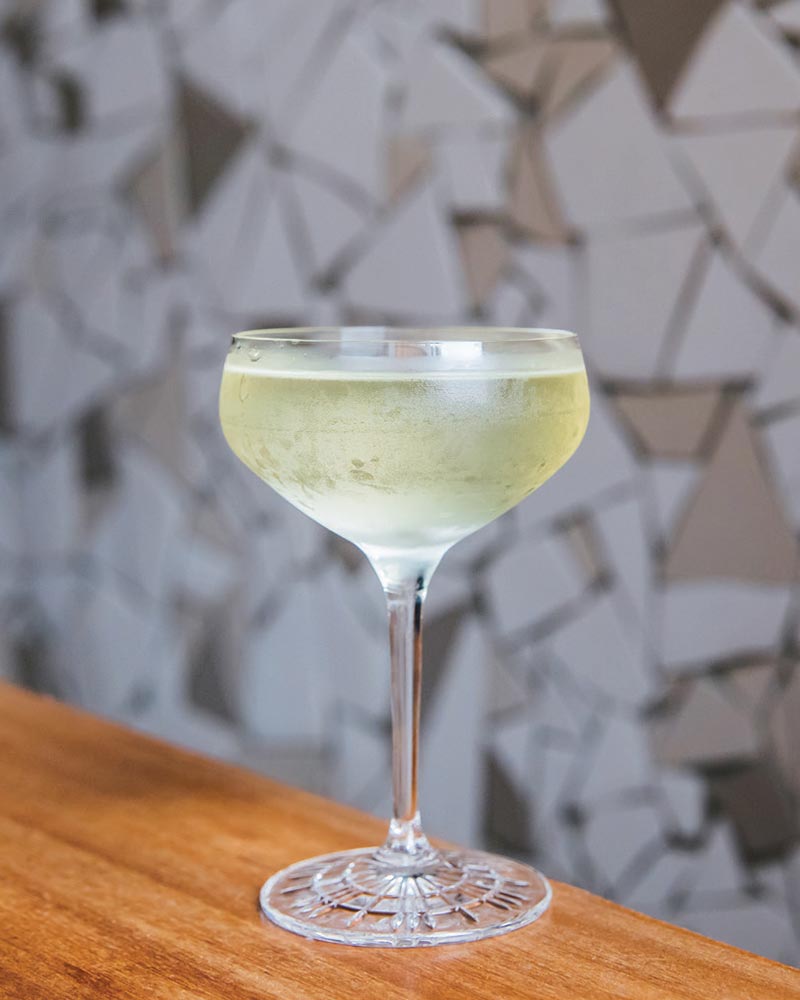
Sotol Thyme
- Ingredients:
- 1.0 oz. Sotol Por Siempre
- 1.0 oz. London Dry gin
- .50 oz. Dry Vermouth
- .25 oz. Bigallet Thym Liqueur
- Method:
- Combine all ingredients in a mixing glass with ice. Stir until chilled and diluted. Strain into a chilled cocktail glass. Express a lemon peel over the cocktail and discard.

White Sotol Negroni
- Ingredients:
- 1.5 oz. Sotol Por Siempre
- .75 oz. Blanc Vermouth
- .75 oz. Bigallet Thym Liqueur
- Orange Bitters
- Method:
- Combine all ingredients in a mixing glass with ice and stir. Once chilled and diluted, strain into a rocks glass over a large ice cube.
- Garnish:
- Orange peel
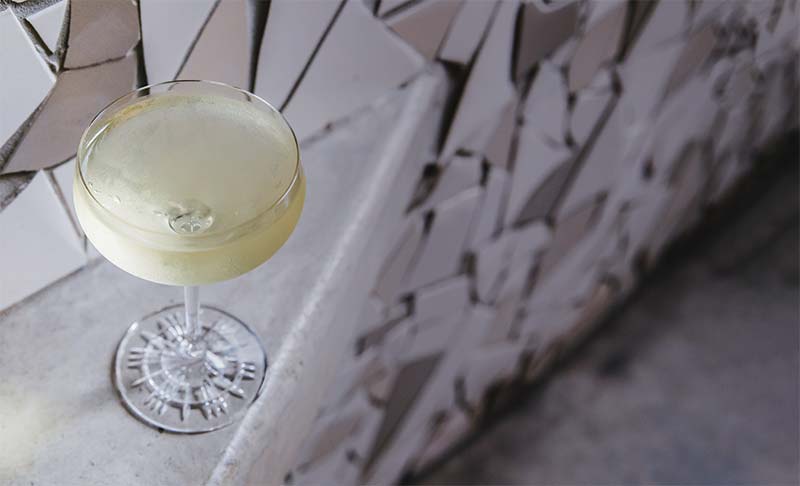
Use it like Gin
Sotol is herbal and floral, much like the juniper flavor profile of London dry Gin. In this aromatic martini riff, sotol adds an earthy component in a split base recipe alongside gin. The dry vermouth rounds out the base spirits and adds a savory note, while thyme liqueur ensures a lasting herbal finish.
Sotol Thyme
- Ingredients:
- 1.0 oz. Sotol Por Siempre
- 1.0 oz. London Dry gin
- .50 oz. Dry Vermouth
- .25 oz. Bigallet Thym Liqueur
- Method:
- Combine all ingredients in a mixing glass with ice. Stir until chilled and diluted. Strain into a chilled cocktail glass. Express a lemon peel over the cocktail and discard.
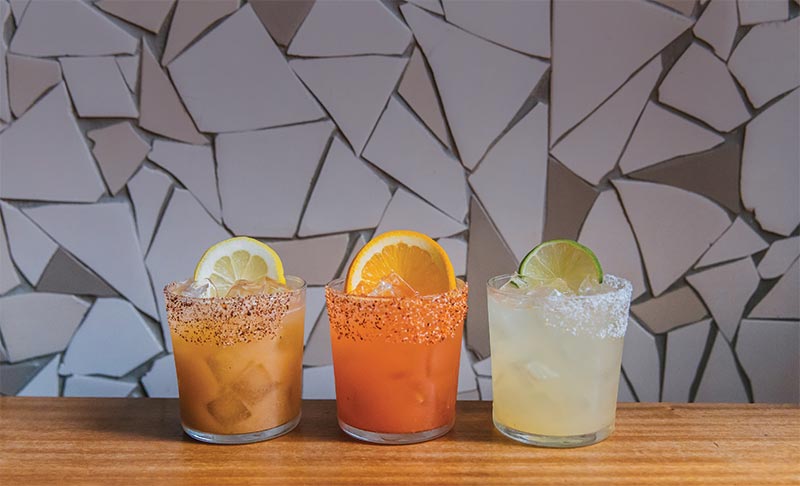
Re-Invent Your Margarita
Margarita Three Ways
Margaritas are one of the most ordered cocktails in the U.S and one of the most well-known recipes among bartenders of all levels. Take a new approach to your margarita by replacing Tequila with Sotol. Try pairing it with classic Mexican flavors like tamarind and blood orange.
